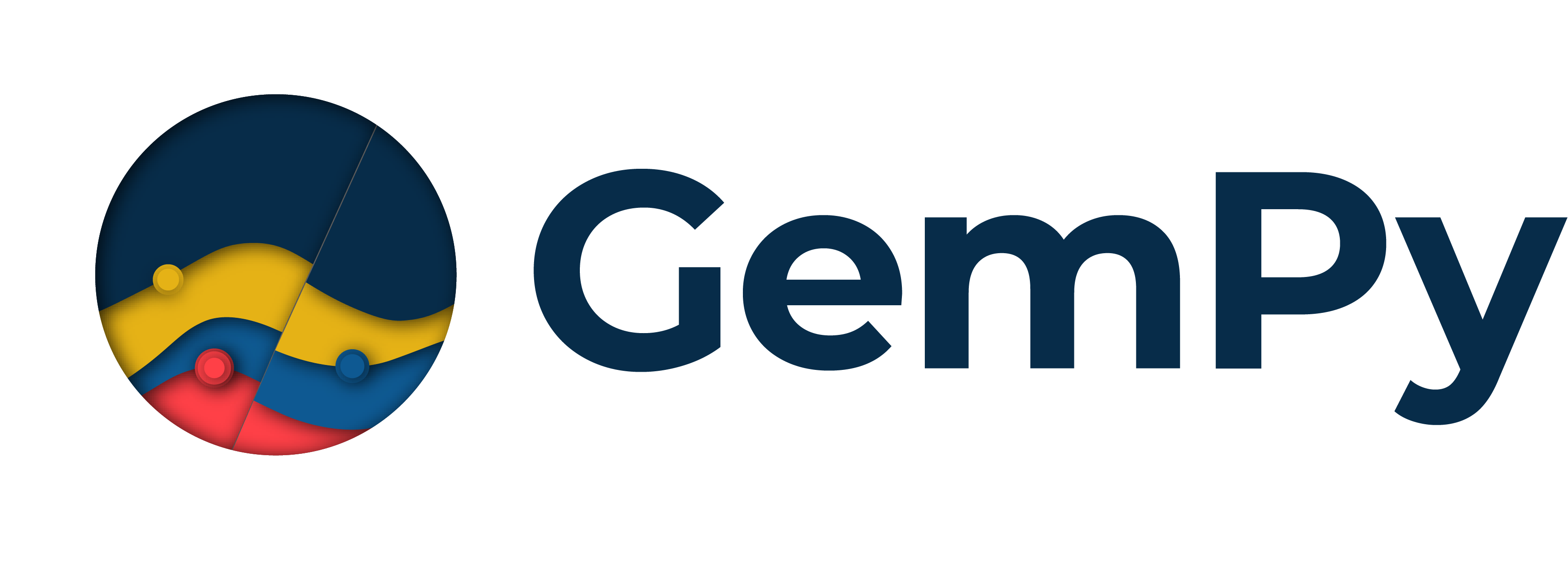Note
Go to the end to download the full example code
1.3c: Adding topography to geological models¶
import gempy as gp
import gempy_viewer as gpv
import numpy as np
import os
1. The common procedure to set up a model:¶
data_path = os.path.abspath('../../')
geo_model: gp.data.GeoModel = gp.create_geomodel(
project_name='Single_layer_topo',
extent=[450000, 460000, 70000, 80000, -1000, 500],
resolution=[50, 50, 50],
refinement=4,
importer_helper=gp.data.ImporterHelper(
path_to_orientations=data_path + "/data/input_data/tut-ch1-7/onelayer_orient.csv",
path_to_surface_points=data_path + "/data/input_data/tut-ch1-7/onelayer_interfaces.csv",
)
)
gp.set_section_grid(
grid=geo_model.grid,
section_dict={
'section1': ([450000, 75000], [460000, 75500], [100, 100]),
}
)
Active grids: ['sections']
2. Adding topography¶
2 a. Load from raster file¶
Coming soon: Importing raster data
This feature is not yet available in the current version of GemPy. Probably will be moved to subsurface since coupling it with the geological model does not add much value.
%%
# This is to make it work in sphinx gallery
# cwd = os.getcwd()
# if not 'examples' in cwd:
# path_dir = os.getcwd() + '/examples/tutorials/ch5_probabilistic_modeling'
# else:
# path_dir = cwd
#
# fp = path_dir + "/../../data/input_data/tut-ch1-7/bogota.tif"
#
# # %%
# geo_model.set_topography(source='gdal', filepath=fp)
# gp.plot_2d(geo_model, show_topography=True, section_names=['topography'], show_lith=False,
# show_boundaries=False,
# kwargs_topography={'cmap': 'gray', 'norm': None}
# )
# plt.show()
2 b. create fun topography¶
If there is no topography file, but you think that your model with
topography would look significantly cooler, you can use gempys
set_topography function
to generate a random topography based on a fractal grid:
sphinx_gallery_thumbnail_number = 2
gp.set_topography_from_random(grid=geo_model.grid)
gpv.plot_2d(geo_model, show_topography=True, section_names=['topography'])
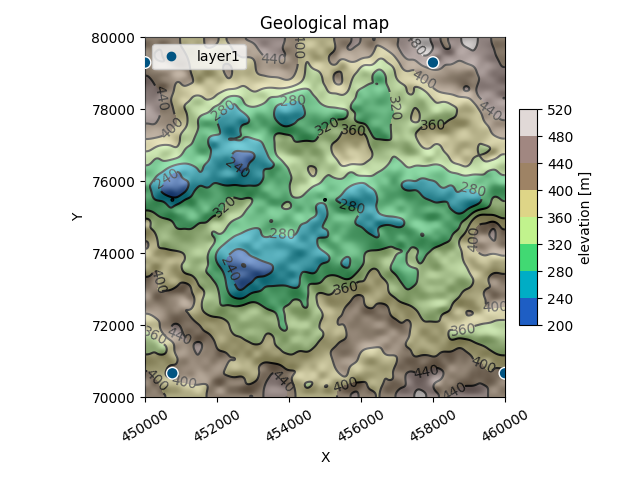
[200. 500.]
Active grids: ['topography' 'sections']
<gempy_viewer.modules.plot_2d.visualization_2d.Plot2D object at 0x7f088aa494b0>
It has additional keywords to play around with:
- fd: fractal dimension:
defaults to 2.0. The higher (try 2.9), the rougher the landscape will be.
- d_z: height difference:
If none, last 20% of the model in z direction.
- extent:
extent in xy direction. If none,
geo_model.grid.extentis used.
- resolution:
resolution of the topography array. If none,
geo_model.grid.resoutionis used. Increasing the resolution leads to much nicer geological maps!
gp.set_topography_from_random(
grid=geo_model.grid,
fractal_dimension=1.9,
d_z=np.array([0, 250]),
topography_resolution=np.array([200, 200])
)
Active grids: ['topography' 'sections']
<gempy.core.data.grid_modules.topography.Topography object at 0x7f08f2160760>
Compute model¶
Setting Backend To: AvailableBackends.numpy
/home/leguark/gempy/gempy/core/data/geo_model.py:164: UserWarning: You are using refinement and passing a regular grid. The resolution of the regular grid will be overwritten
warnings.warn(
Visualize:¶
Now, the solutions object does also contain the computed geological map. It can be visualized using the 2D and 3D plotting functionality:
gpv.plot_2d(geo_model, show_topography=True, section_names=['topography'], show_boundaries=False, show_data=True)
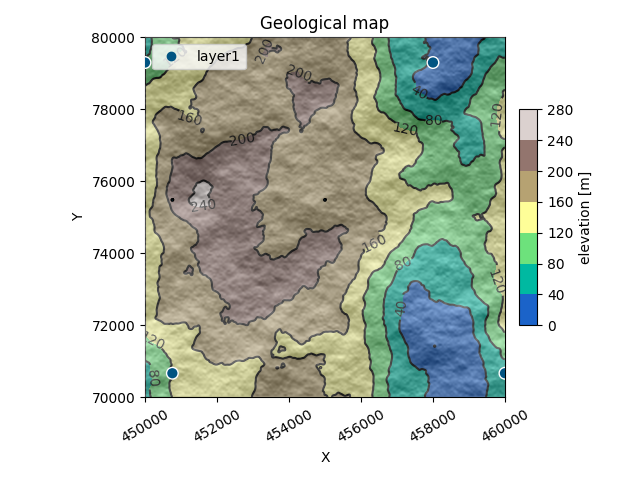
<gempy_viewer.modules.plot_2d.visualization_2d.Plot2D object at 0x7f08f1f30790>
gpv.plot_2d(geo_model, show_topography=True, section_names=['section1'])
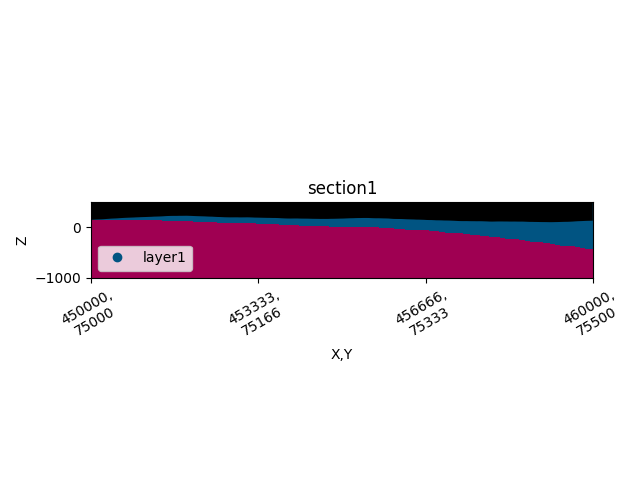
/home/leguark/gempy_viewer/gempy_viewer/API/_plot_2d_sections_api.py:106: UserWarning: Section contacts not implemented yet. We need to pass scalar field for the sections grid
warnings.warn(
<gempy_viewer.modules.plot_2d.visualization_2d.Plot2D object at 0x7f08f5192ef0>
g3d = gpv.plot_3d(
model=geo_model,
show_topography=True,
show_lith=False,
show_surfaces=False,
show_results=False,
ve=5
)
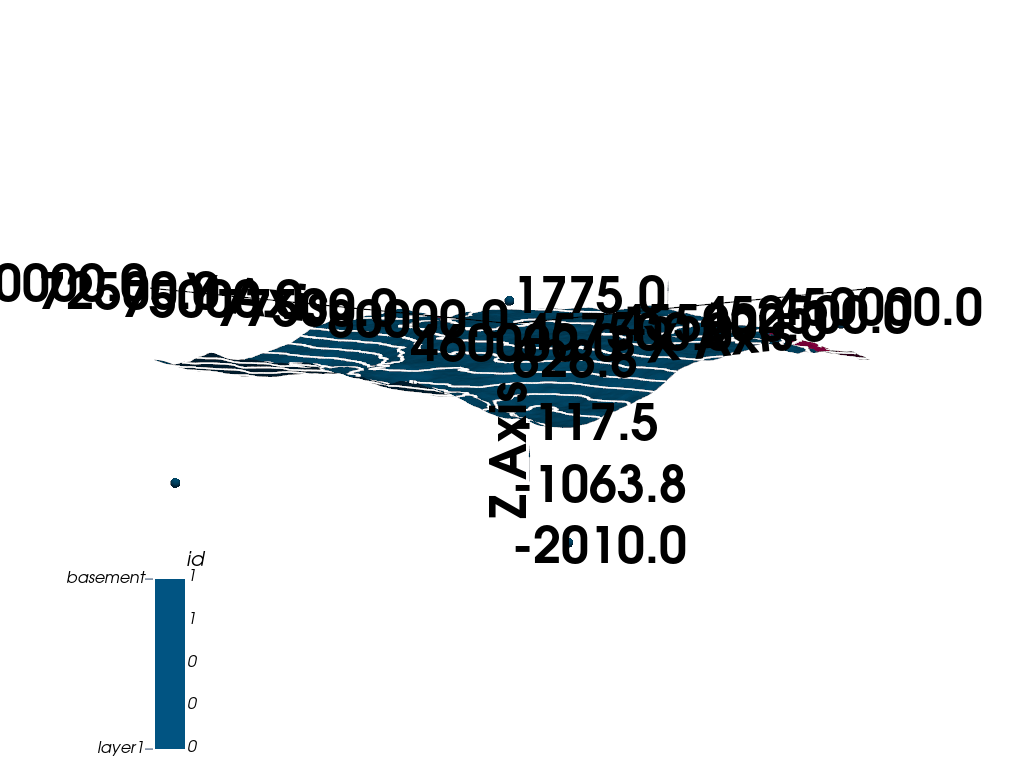
sphinx_gallery_thumbnail_number = 3
g3d = gpv.plot_3d(
model=geo_model,
show_topography=True,
show_lith=True,
show_surfaces=True,
ve=5
)
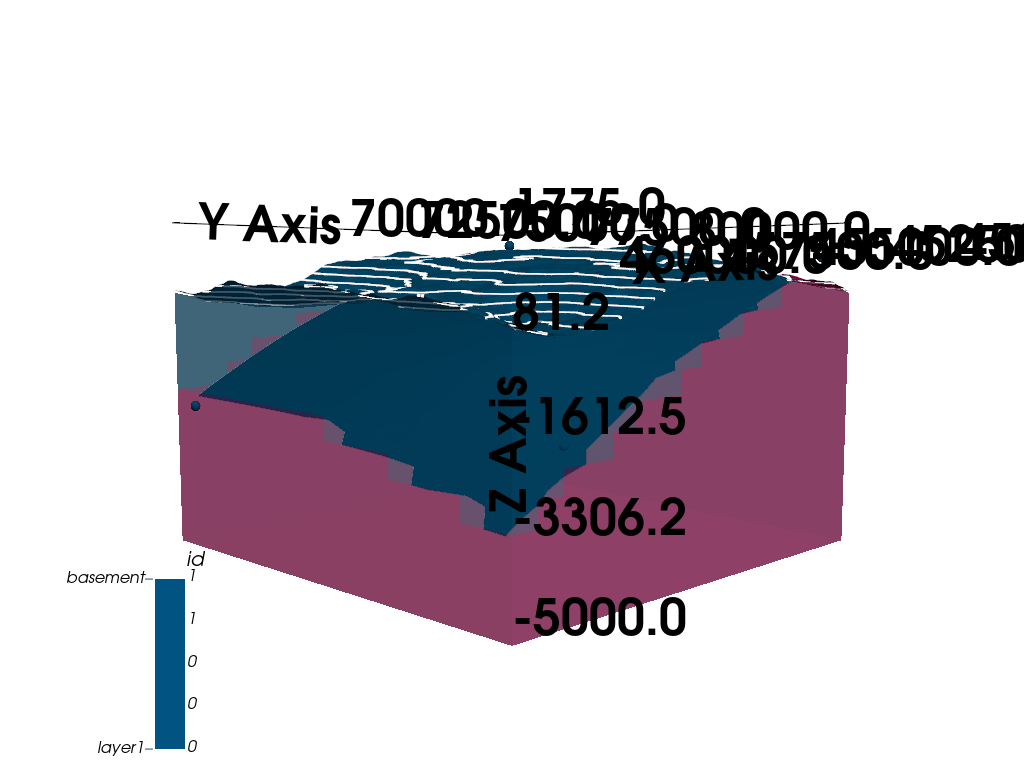
Total running time of the script: (0 minutes 4.335 seconds)
